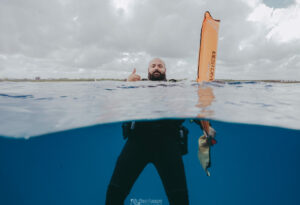Cenote diving is an activity that can be enjoyed all year long, with divers able to explore these incredible sites at any time. The water stays at a constant temperature of around 24°C or 75°F, providing comfortable diving conditions throughout the seasons.
Still, the dry season is considered the best time of year to dive in the cenotes.
Whether you plan your dive based on the season, the water temperature, or local customs, each Mexican cenote offers a unique and memorable experience.
That being said, just like any underwater adventure, the timing of your trip can have a big impact on the overall quality of your dive.
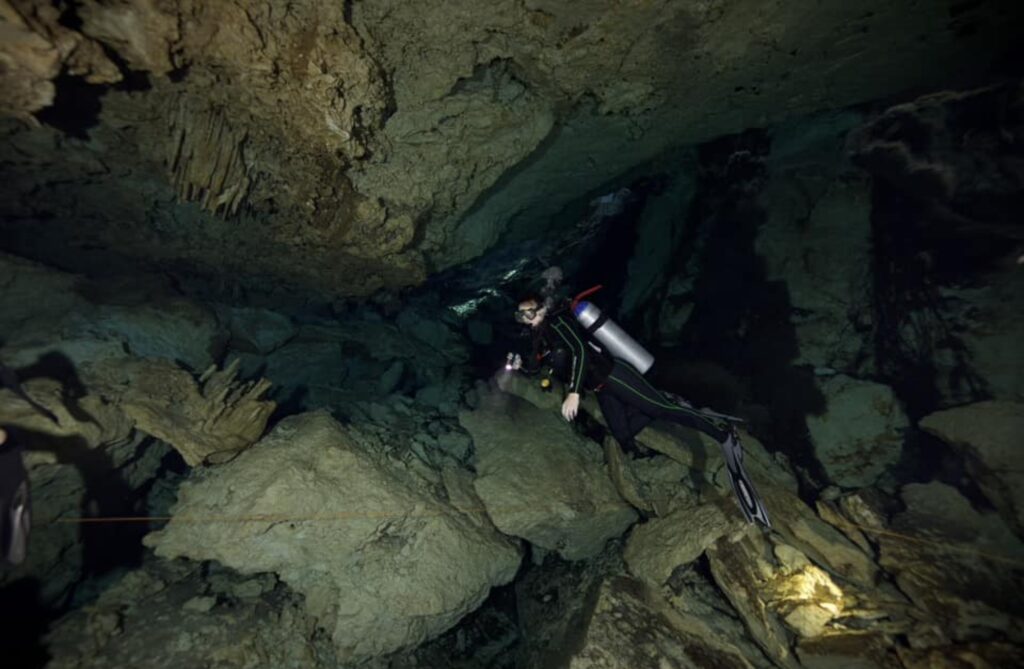
Diving during the rainy season (May to October)
Diving in Mexico during the rainy season, which runs from May to October, can hold some wonderful surprises.
Contrary to popular belief, the showers are often brief and usually occur during a small part of the day, leaving plenty of time to enjoy clear skies.
Advantages of Diving During the Rainy Season
Diving in the cenotes during this less touristy period allows you to explore sites that are usually very crowded in a much more peaceful atmosphere, without pressure, without crowds, and most importantly, without having to share the space with too many other divers, as is often the case at Cenote Dos Ojos, one of the most popular spots in the Riviera Maya.
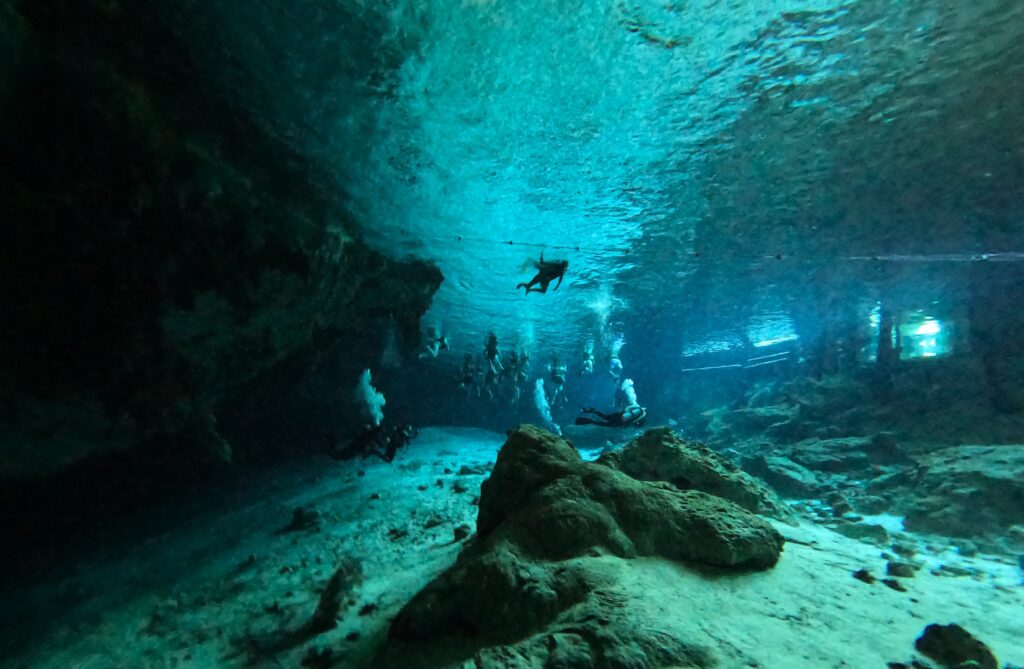
When tourist traffic slows down, dive centers become more available and attentive. This makes it easier to schedule your dives at more convenient or even custom times. If you dream of exploring the cenotes away from the crowds, this is the perfect time to do it.
Disadvantages of Diving During the Rainy Season
Diving in cenotes during the rainy season does come with a few drawbacks to consider. Visibility can be temporarily reduced due to sediments or tannins brought in by the rain, especially near the entrances or at the surface.
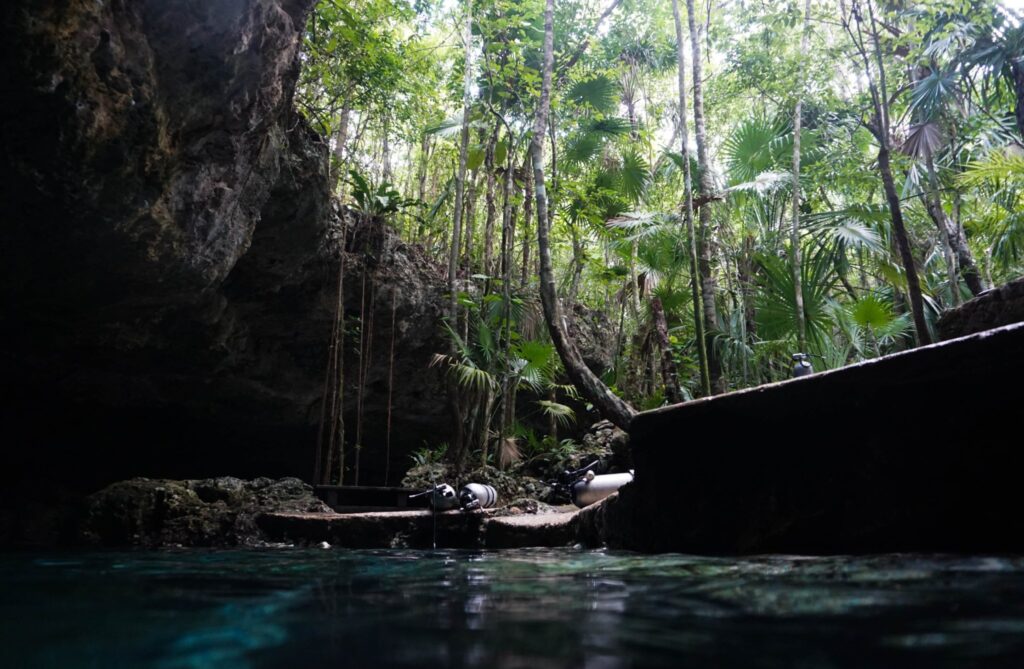
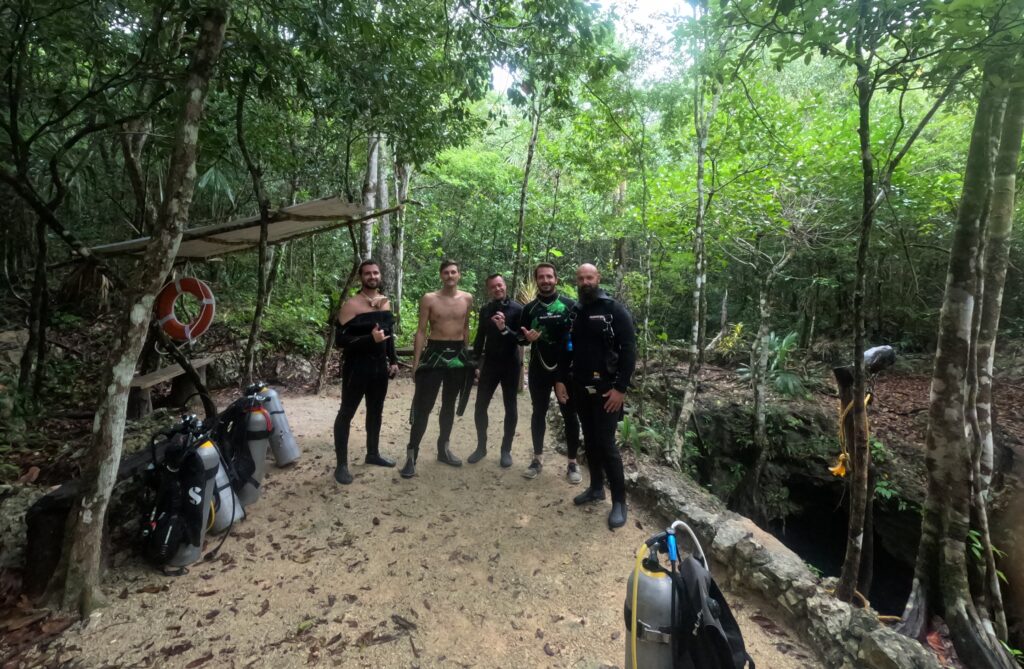
In addition, the humid heat and sudden showers can make the experience less pleasant, both during preparation and while spending time around the sites.
Lastly, the reduced sunlight caused by cloud cover can lessen the dramatic light effects often sought after, especially in underwater photography. For optimal conditions, the dry season from November to May remains the most favorable time to dive.
Diving during the dry or high season (November to April)
From November to April is often considered the best time of year to dive in the cenotes.
This season offers ideal conditions to explore these mystical Mayan caves.
Advantages of Diving During the Dry / High Season
The high season is truly ideal for cenote diving, as rainfall is rare, humidity is low, and underwater visibility is exceptional due to the minimal runoff from rain.
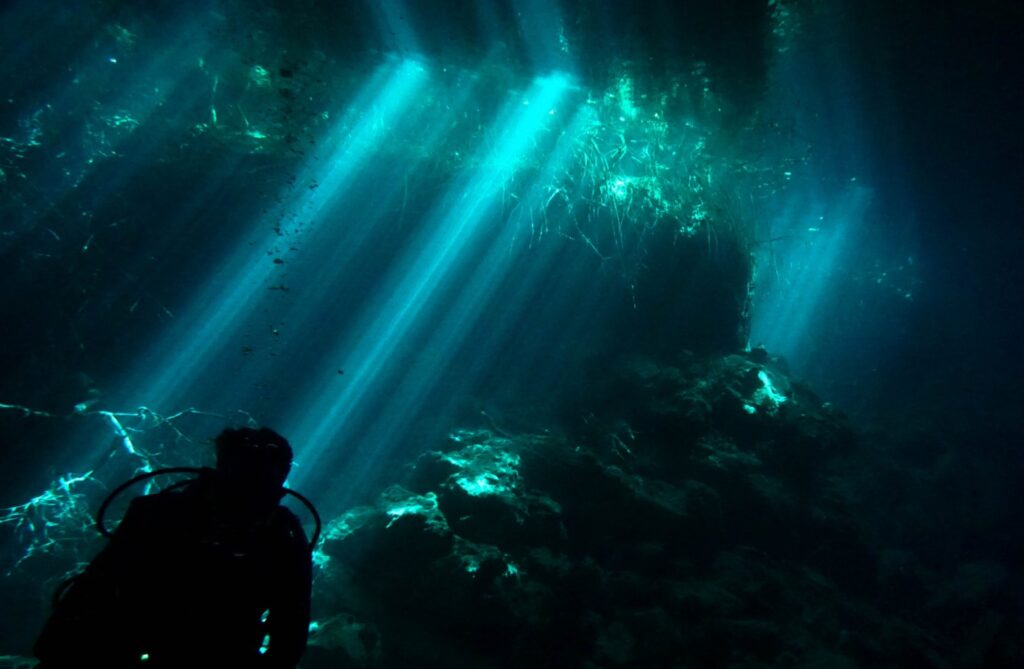
Although the water temperature remains steady at around 24°C throughout the year, the cooler air makes getting out of the water more comfortable.
This is the most recommended time to explore the cenotes under optimal conditions.
Disadvantages of Diving During the Dry / High Season
Even though the high season is often considered the best time to dive in the cenotes, it does come with some downsides.
This period attracts many visitors, especially during the Christmas and spring holidays, leading to heavy crowds at the most popular sites, particularly those around Tulum and Playa del Carmen.
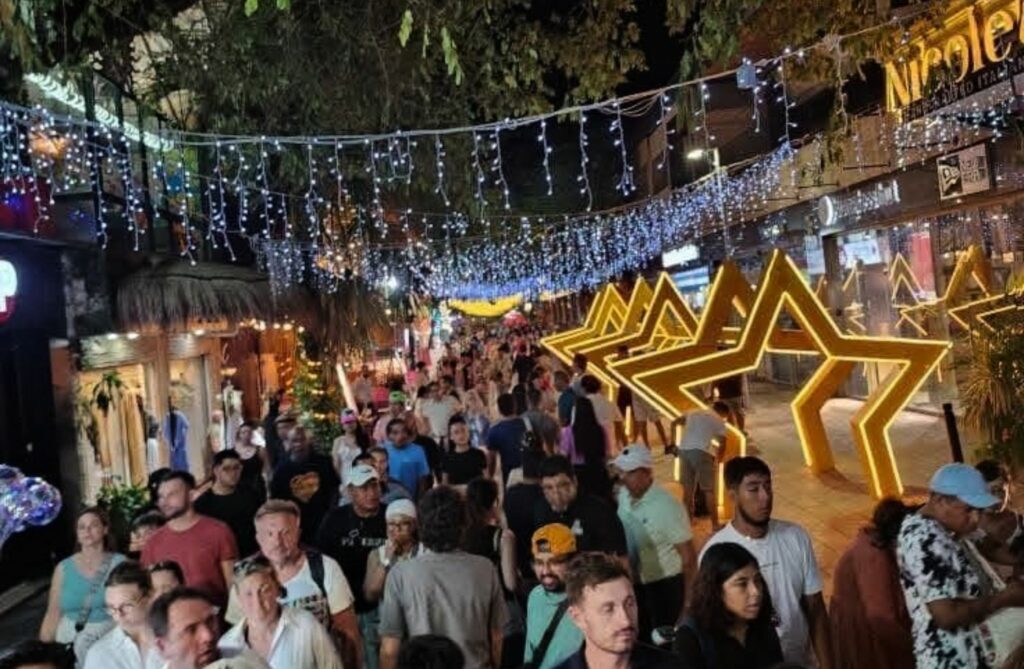
The influx of tourists can limit availability, making it harder to book dives if not done in advance.
Fortunately, with Triton Diving, you’re guaranteed a stress-free diving experience, guided under the best possible conditions.
How the Seasons Affect Light and Colors in the Cenotes
Each season subtly transforms the visual atmosphere of the cenotes, influencing the light, the colors, and even the overall diving experience.
Winter Light: Depth and Low-Angle Sunrays
In winter, for example, the lower sun on the horizon enters the cenotes at a different angle. At Cenote Chac Mool, this results in low-angle light that reaches deeper into the caverns, creating dramatic light beams and an almost otherworldly atmosphere.
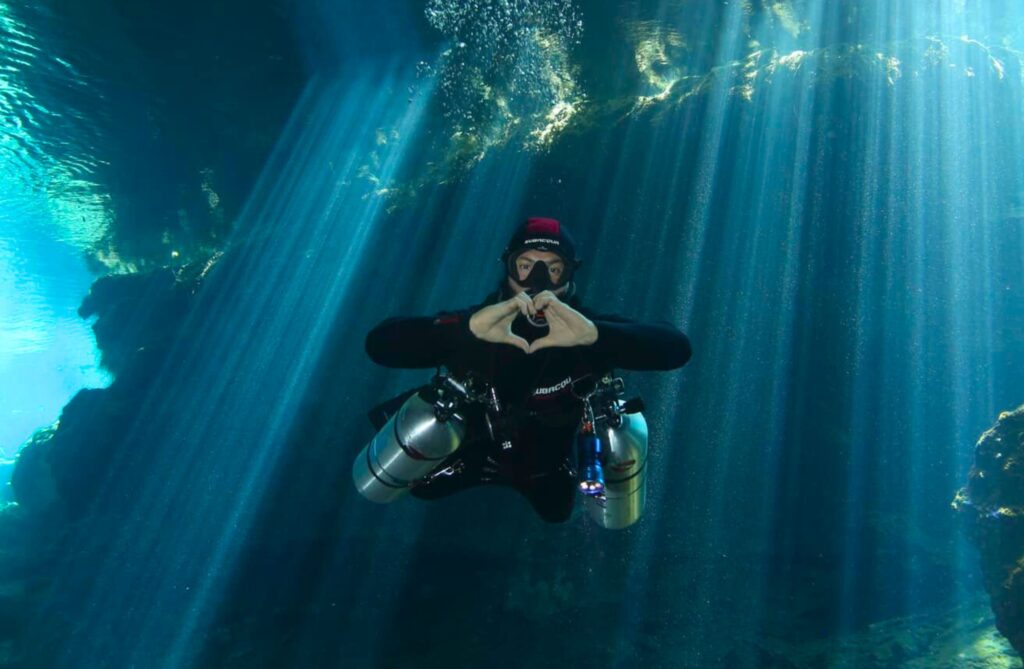
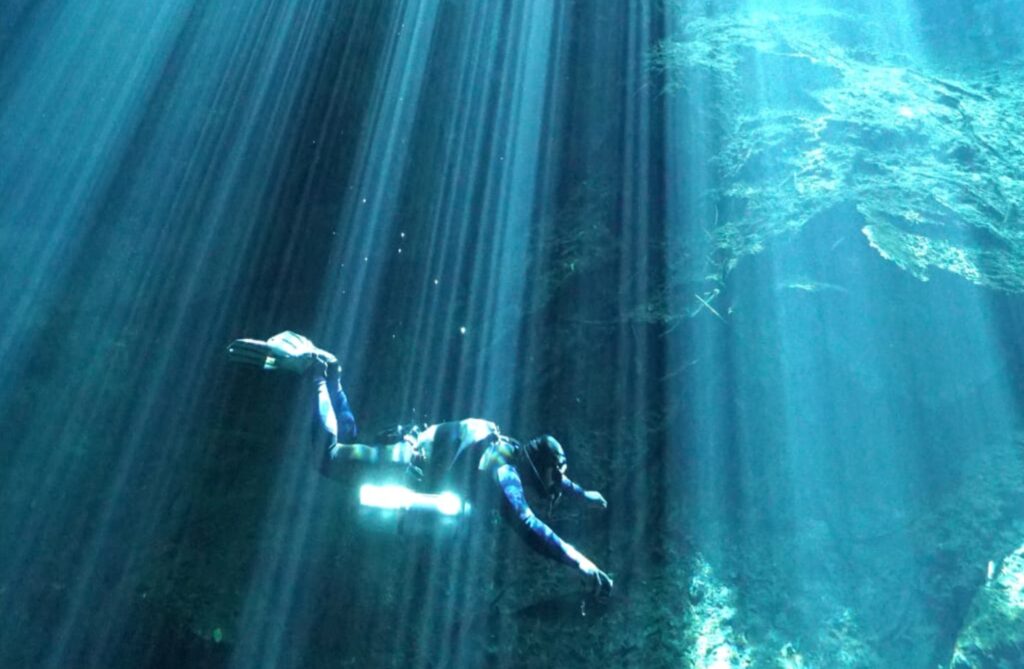
It’s a perfect time for underwater photography enthusiasts.
Summer Light: Verticality and Maximum Intensity
In contrast, during summer, with the sun directly overhead, it’s the ideal time to dive in cenotes like The Pit.
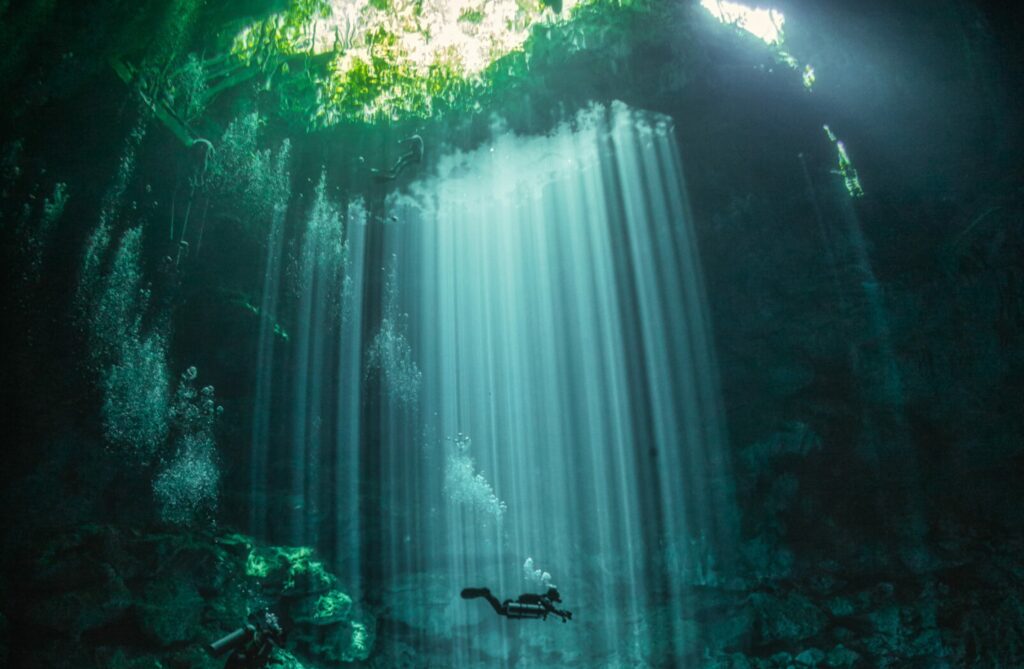
There, a straight and intense beam of light pierces through the clear water layers all the way to the bottom, revealing the full majesty of the halocline and the stunning columns of light.
The Effect of Tannins: Colors and Organic Layers
But summer is also the season of colors. The heat, combined with humidity and frequent rain, leads to the decomposition of leaves in open cenotes.
This creates a thin acidic layer rich in tannins on the surface, especially in sites like Carwash or Casa Cenote (see photo below).
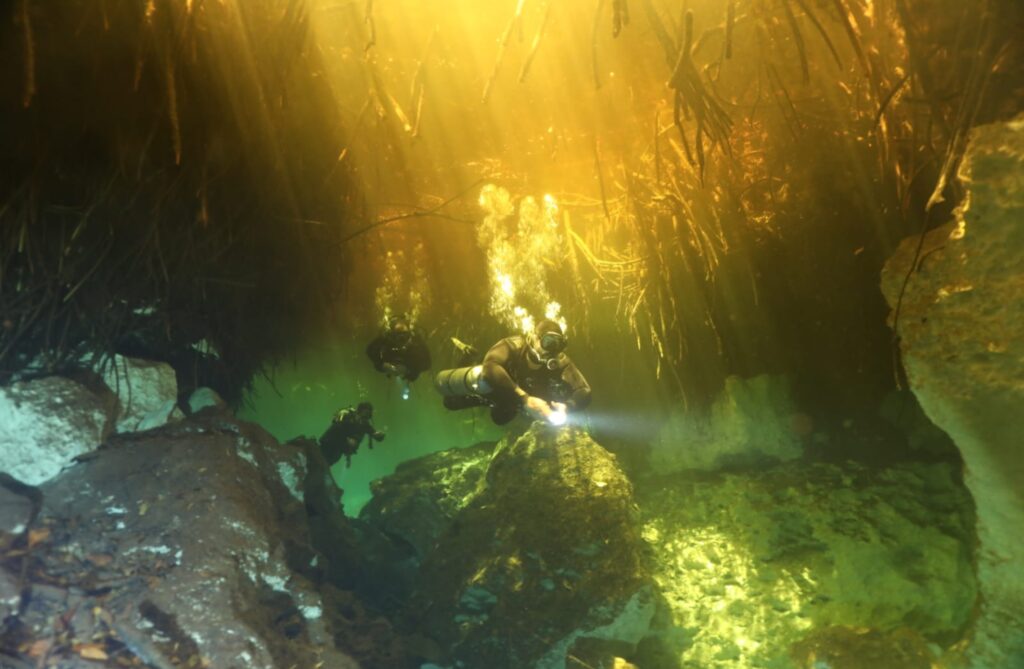
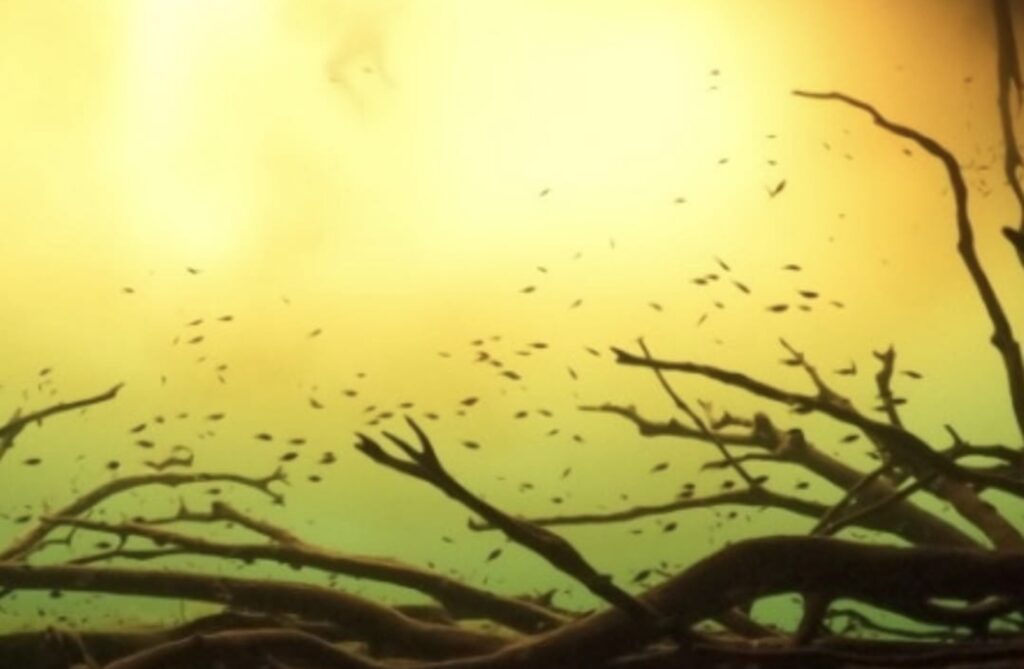
This one meter thick layer, warmed by the sun, creates unique reflections with shades of yellow, orange, and green that float above the crystal clear water. It is a natural spectacle that changes throughout the day.
My Opinion :
Having dived in cenotes for many years, I can confidently say that this type of diving can be enjoyed year-round. Each season has its own advantages: the dry season offers exceptional visibility, while the low season brings more peace and fewer crowds.
The best time really depends on your priorities—whether it’s water clarity, a quiet atmosphere, or cultural events.
There is no bad time to explore these natural wonders. Whether you’re seeking an intense adventure or a more intimate experience, the cenotes of the Yucatán always deliver unforgettable memories.
It’s up to you to choose the moment that best fits your diving style.
